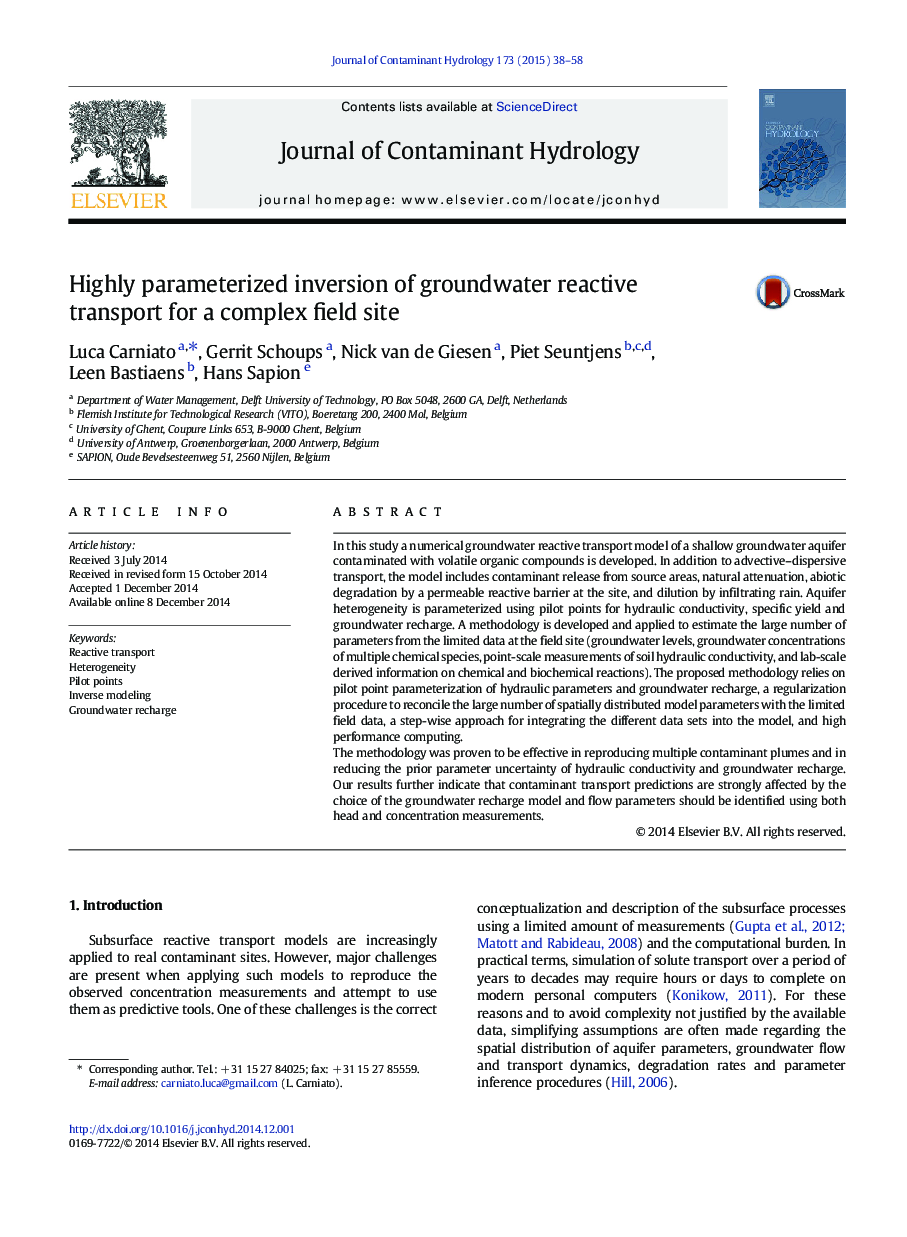| Article ID | Journal | Published Year | Pages | File Type |
|---|---|---|---|---|
| 4546460 | Journal of Contaminant Hydrology | 2015 | 21 Pages |
•A multicomponent reactive transport model of a real PRB site was developed.•Heterogeneous aquifer properties were parameterized with pilot points.•A stepwise approach for inversion of reactive transport was proposed.•Reducing the amount of infiltrating rainwater avoids excessive contaminant dilution.•Infiltration and hydraulic conductivity estimates must be validated on site.
In this study a numerical groundwater reactive transport model of a shallow groundwater aquifer contaminated with volatile organic compounds is developed. In addition to advective–dispersive transport, the model includes contaminant release from source areas, natural attenuation, abiotic degradation by a permeable reactive barrier at the site, and dilution by infiltrating rain. Aquifer heterogeneity is parameterized using pilot points for hydraulic conductivity, specific yield and groundwater recharge. A methodology is developed and applied to estimate the large number of parameters from the limited data at the field site (groundwater levels, groundwater concentrations of multiple chemical species, point-scale measurements of soil hydraulic conductivity, and lab-scale derived information on chemical and biochemical reactions). The proposed methodology relies on pilot point parameterization of hydraulic parameters and groundwater recharge, a regularization procedure to reconcile the large number of spatially distributed model parameters with the limited field data, a step-wise approach for integrating the different data sets into the model, and high performance computing.The methodology was proven to be effective in reproducing multiple contaminant plumes and in reducing the prior parameter uncertainty of hydraulic conductivity and groundwater recharge. Our results further indicate that contaminant transport predictions are strongly affected by the choice of the groundwater recharge model and flow parameters should be identified using both head and concentration measurements.
